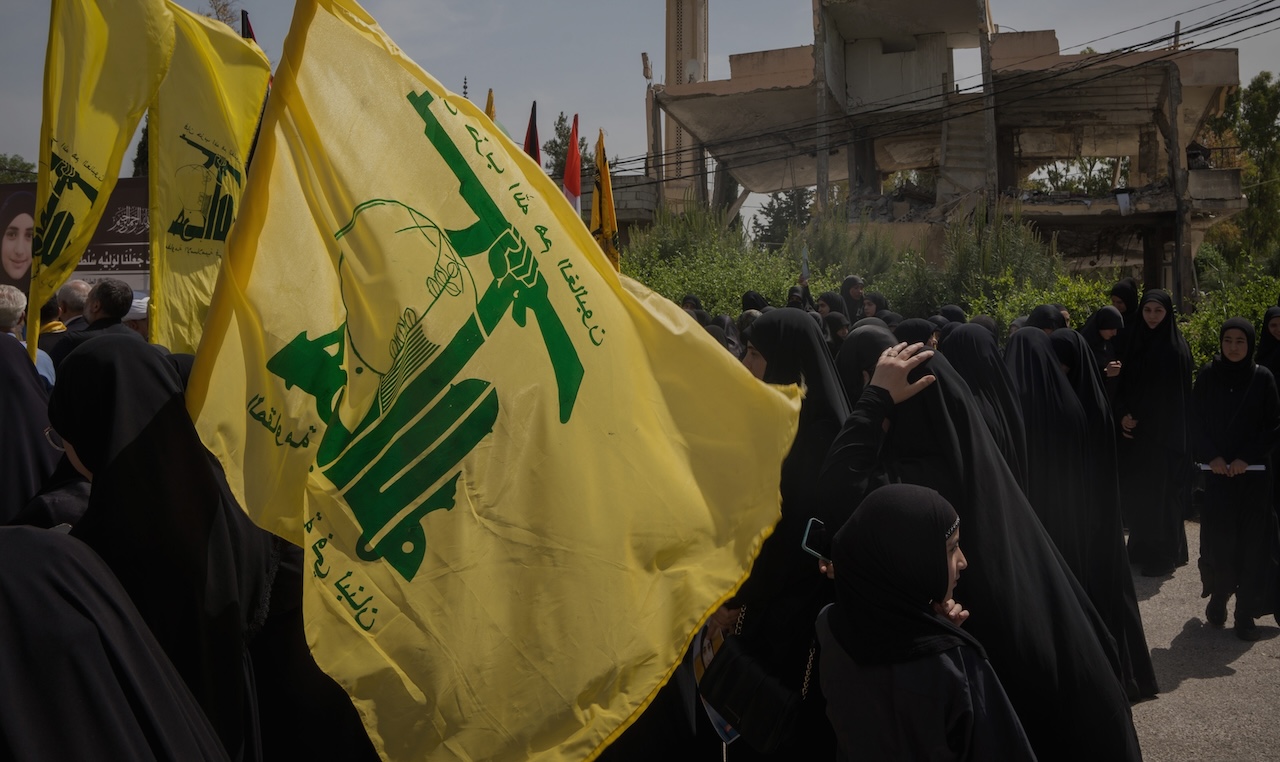Hezbollah’s Communication Device Attacks

Hezbollah Pager and Walkie-Talkie Explosions Across Lebanon: What Happened?
Intelligence cut off: 11:00 GMT 19th of September 2024
On 17 September, thousands of pagers that were used by Hezbollah members detonated simultaneously across Lebanon. At 15:30 local time, the pagers reportedly beeped for several seconds after receiving a message ostensibly from Hezbollah leadership, before detonating. At least 12 deaths were reported, with approximately 3,000 injuries. Amongst those killed was Muhammad Ali Ammar, the son of Hezbollah MP Ali Ammar, and Iran’s ambassador to Lebanon, Mojtaba Amini, who was wounded.
Then, on 18 September, thousands of two-way walkie-talkie radios used by Hezbollah members detonated. Unconfirmed reports suggest that home solar energy systems and biometric fingerprint scanners may have also exploded. Some of the radios detonated during the funerals for Hezbollah members who had been killed in the pager attack a day prior. 20 deaths were reported, with 450 injuries. While the 17 September pager detonations were more widespread, the 18 September walkie-talkie blasts were more powerful and deadly.
Why Did Hezbollah Use Pagers and Walkie-Talkies Instead of Cell Phones?
Hezbollah members have been using pagers for years, due to operational security concerns regarding Israeli tracking of cell phones. A speech by Hezbollah’s secretary-general Hassan Nasrallah in February encouraged members to discard their cell phones, which led to more widespread adoption of pagers amongst the rank-and-file. As well as being used by Hezbollah members throughout Lebanon, pagers were distributed to members and allies in Iraq, Syria and Iran and the pager detonations injured at least 14 people in Syria, according to the Syrian Observatory for Human Rights.
Who was Behind the Explosions Targeting Hezbollah?
The attacks were highly likely conducted by Mossad, Israel’s national intelligence agency. Historically, responsibility has not been publicly claimed by Israeli officials for Mossad operations conducted abroad, therefore it is highly unlikely that an official claim of responsibility will be made for the attacks.
While there has been speculation that the attacks involved hacking into the devices to cause the batteries to explode, this is almost certainly untrue. While overheated lithium-ion batteries can combust and in rare instances, cause small explosions, the explosions were almost certainly caused by small quantities of military-grade high-explosives.
How Did Mossad Infiltrate Hezbollah’s Supply Chain?
The model of pagers that detonated were mostly Gold Apollo’s AR924 model. Hezbollah had reportedly ordered over 5,000 pagers, before distributing them to members. Gold Apollo, a Taiwanese company, has stated since the attack that these models were manufactured on license by the Budapest-based company BAC Consulting. Gold Apollo additionally stated that they had encountered issues with remittances from BAC, and that payments had come through the Middle East. According to three intelligence officers briefed on the operation who spoke to the New York Times, BAC Consulting was an Israeli front posing as an international pager producer.
The walkie-talkies that detonated, meanwhile, were primarily IC-V82 models from the Japanese company ICOM. ICOM has stated that they ended production of the model 10 years ago. It is highly likely that Mossad similarly infiltrated the supply chain for the walkie-talkies.
What Are the Immediate Consequences for Hezbollah?
The attacks have firstly highly likely caused a significant impact on Hezbollah’s operational capability. As well as the deaths, a substantial number of members are now wounded, with many injuries from the attack including maiming and blinding. It is highly likely that their command structure is significantly disrupted. Internal communications are almost certainly also disrupted.
Secondly, the psychological impact on morale is almost certainly profound. Such a large-scale infiltration into Hezbollah’s supply chain is a major breach of security. Questions will be raised not just among Hezbollah, but also in Iran and Tehran’s other proxy forces of the extent to which their supply chains could be compromised. The use of commercially available products and parts by Iran and its proxies is commonplace. The attacks will almost certainly stoke paranoia regarding the potential danger posed by any electrical device.
Why Was the Timing of the Mossad Operation Significant?
The most likely reason for the specific timing of the attack is that the capability was about to be exposed and possibly nullified. According to “high-level regional intelligence sources” who briefed Al-Monitor, the decision to detonate the pagers was expedited by the discovery of device tampering by two Hezbollah operatives. While one of the operatives was “neutralised”, the pager attack was carried out in anticipation of the other operative alerting authorities, according to these sources.
Furthermore, three US officials told Axios that the pager operation was done now due to potential discovery, with one describing it as a “use it or lose it moment”. It is highly likely that the walkie-talkie detonations, meanwhile, were activated due to concerns that the remaining tampered devices would be discovered following the pager attack.
Was the Pager Operation Part of a Broader Israeli Strategy?
According to a “former Israeli official with knowledge of the operation”, the pager operation was originally intended to be conducted as an immediate prelude to a wider operation. It is a realistic possibility that such an operation could still occur, however, the lack of an Israeli Defence Forces (IDF) operation thus far likely further indicates that the tactical communication devices attacks were conducted early to avoid the capability being compromised.
The pager attack happened just one day after Israeli authorities announced that the Israel Security Agency, Shin Bet, had foiled a Hezbollah plot to assassinate a former senior Israeli security official using a remotely detonatable anti-personnel mine. It is possible, therefore, that retaliation for this plot was also a factor in the attacks.
How is Israel’s Northern Border Related to the Conflict?
On 16 September, the Israeli security cabinet made the safe return of residents to northern Israel an official war objective. Due to the threat of Hezbollah drone, missile and rocket attacks, many Israeli residents have fled northern Israel close to the border with Lebanon. Israel’s defence minister, Yoav Gallant, has stated that the only available method to return residents to northern Israel “is via military action”. On 18 September, following the pager and walkie-talkie detonations, Gallant stated that Israel is “opening a new phase in the war” and that “the centre of gravity is shifting to the north”.
The attacks, therefore, are highly likely part of an Israeli campaign to degrade Hezbollah’s operational capability as Israeli forces reorient to the northern front.
What Could Hezbollah’s Retaliation Look Like?
Hezbollah has vowed to respond to the attacks, issuing a statement saying that Israel will get “just retribution”. Lebanon’s foreign minister, Abdallah Bou-Habib, has also said that “Hezbollah are definitely going to retaliate in a big way”. Hezbollah’s leader, Nasrallah, is set to deliver a speech on 19 September at 17:00 local time, the content of which will likely indicate the extent of Hezbollah’s retaliation. The IDF has issued a statement asserting that “preparation for defensive operations on all fronts” has been reviewed, and that Israeli civilians should continue exercising “alertness”.
Hezbollah maintains an arsenal of some 150,000 rockets and missiles, and are estimated to have a fighting force of around 50,000 fighters. Hezbollah has sophisticated systems such as the Iranian-derived precision-guide Fateh-110 short-range ballistic missile (SRBM) with a range of 300km, and the SCUD B/C/D SRBM variants with a range of 500km, which give Hezbollah the capability to accurately strike targets anywhere in Israel if air defence is penetrated. However, the vast majority of Hezbollah’s arsenal consists of unsophisticated and unguided systems such as “Katyusha” variants which have effective ranges between 4-40km.
On 4 July, Hezbollah launched over 200 rockets and one-way attack uncrewed aerial vehicles (OWA-USVs, or ‘suicide drones’) into northern Israel, in retaliation to the killing of a senior Hezbollah commander. It is likely that the Hezbollah leadership will feel compelled to retaliate with either a similarly large or greater retaliation attack, due to both the sheer extent of the pager attack and humiliation. On the other hand, however, Hezbollah will not want to give Israel’s Netanyahu administration an excuse they can use as a pretext for a major IDF offensive into southern Lebanon.
Could Hezbollah’s Retaliation Expand Into a Regional Conflict?
It is most likely that Hezbollah’s retaliation strikes will involve strikes, primarily against military installations in northern Israel, within range (~40km) of most of their weapon systems. There is a realistic possibility that Israeli settlements within range, as well as Haifa which is 30-35km from the border, will also be targeted.
An additional risk is that Hezbollah’s retaliation could be folded into a wider Iran-led operation as part of Iran’s Axis of Resistance. Iranian officials have repeatedly vowed retaliation for the 31 July assassination of Hamas’ political leader Ismail Haniyeh in Tehran, Iran. This retaliation would most likely involve a layered coordinated attack against Israel from Iran, its proxy forces in Iraq and Syria, Hezbollah in Lebanon and the Yemeni-Houthis. Most recently, on 16 September, a senior Iranian military commander told Chinese state media that Iranian retaliation is “certain”, but that Tehran will “choose the right moment.”
Security Services across the Middle East
If you’re navigating through high-risk regions and require expert journey management services, Solace Global is ready to assist. Our specialised team delivers tailored solutions to enhance your safety and security, ensuring you can operate with confidence in challenging environments. Reach out to us today to discover how we can provide the support you need for a secure and seamless journey.
